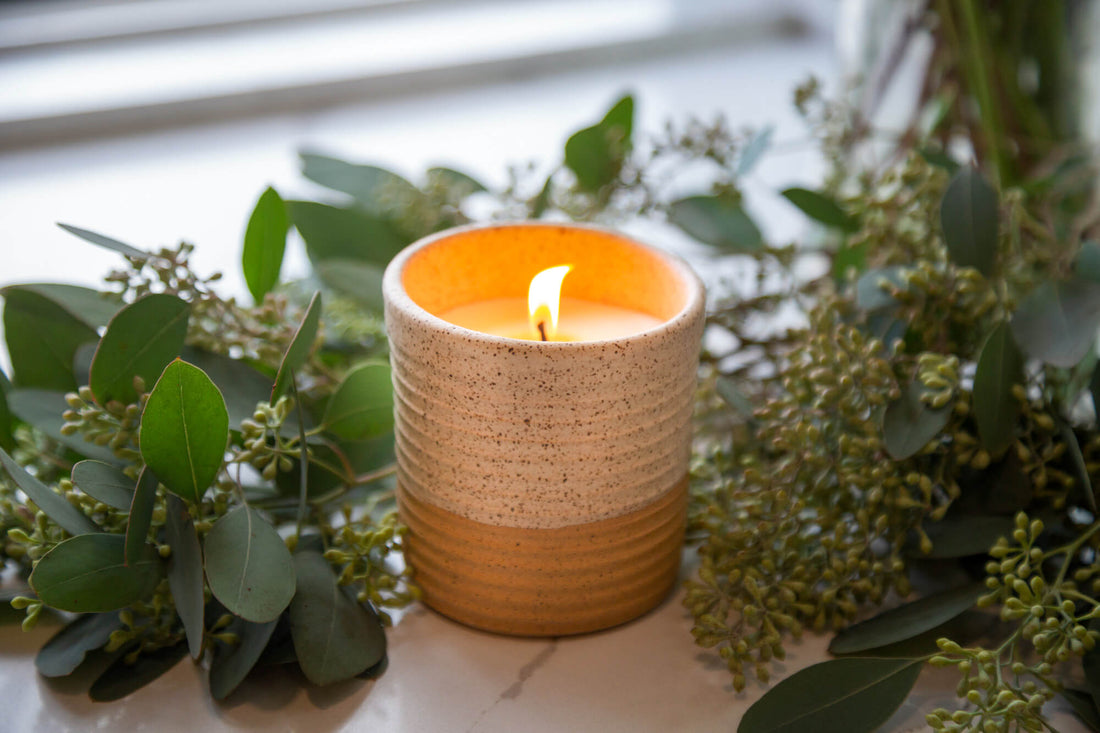Candles are meant to create calm—not concern. But if you’ve ever Googled “are candles toxic?” and fallen into a rabbit hole of scary headlines, we get it. There’s a lot of conflicting information out there, and not all of it is helpful (or true).
Let’s break down the facts about candle safety, what makes a candle potentially toxic, and—most importantly—how to find non-toxic candles that feel as good as they smell.
First Things First: Why Do People Say Candles Are Toxic?
There’s a reason "toxic candles" became such a buzzy topic. Historically, some candles really were made with harmful ingredients, like:
- Paraffin wax, a petroleum byproduct that can release benzene and toluene (two known carcinogens) when burned.
- Lead-core wicks, which were banned in the U.S. in 2003—but may still be found in unregulated imports.
- Synthetic fragrances with phthalates, which are linked to endocrine disruption and other health concerns.
So yes, the concern isn’t totally made up. But thankfully, most modern candle makers (ReCandle Co. included) know better.
How Do You Know If a Candle Is Toxic?
Here’s a quick checklist:
- Is the wax paraffin-based? If yes, there’s a chance it may release indoor air pollutants.
- Does it say “phthalate-free”? Fragrance ingredients aren’t usually disclosed, so if phthalates aren’t mentioned at all, assume they could be present.
- Is there any mention of Prop 65 compliance? That’s a California law requiring disclosure of potentially harmful ingredients.
- Does the wick have a metal core? Lead-core wicks are banned in the U.S., but some imported candles may still contain metal like zinc or tin. If the wick looks shiny or metallic and there’s no info on the label, it’s best to skip it. Opt for cotton or paper wicks instead.
If you're asking the question "how do you know if a candle is toxic?"—these are the red flags to watch for.
So, Which Candles Are Toxic?
Toxic candles aren’t always easy to spot—but there are some telltale signs:
- It’s suspiciously cheap. If a candle is priced unusually low, it’s likely cutting corners with ingredients like paraffin wax or synthetic fragrance oils that aren’t tested for safety.
- There’s zero or low ingredient transparency. If a brand isn’t clearly highlighting what kind of wax, fragrance, or wick it uses—especially on its website or packaging—it could be a sign they’re using cheaper or lower-quality materials. For example, candles labeled “soy blend” can legally contain a high percentage of paraffin, even if it’s not obvious or called out.
- It smells overwhelming or artificial. A headache-inducing scent could be a sign of phthalates or unregulated synthetics.
- It burns with soot or smoke. Excess soot might point to a paraffin base or a poorly made wick.
- It’s imported with unclear labeling. Some international candles may not follow U.S. safety regulations, especially when it comes to wicks or fragrance disclosures.
In short, if a candle raises more questions than it answers, it's worth thinking twice. Safe candles will usually tell you exactly what they're made from—and why it matters.
So, What Type of Candles Are Safe?
You’re looking for:
- Soy, coconut, or beeswax (natural, clean-burning options)
- Phthalate-free fragrance oils—like the Clean Scents line we use
- Cotton or wood wicks, with no metal
- Brands that are clear about what goes into their products
At ReCandle Co., our entire candle system is built around clean, refillable, non-toxic ingredients:
🌱 100% soy wax
🌸 Non-toxic, phthalate-free scents (no Prop 65 ingredients either)
🧵 Cotton wicks—no lead, no zinc
🕊️ Designed to burn cleanly in small, well-ventilated spaces
And because our ceramic jars are reusable, you're not tossing containers or exposing yourself to glue, adhesives, or chemical finishes.
What About Dripless or Unscented Candles Toxic?
Are dripless candles toxic? Not automatically—but check the label. Dripless usually just means the wax burns evenly, not that it’s safe. Many dripless candles still use paraffin.
Are unscented candles toxic? They can be, if they’re made with paraffin or poor-quality ingredients. Unscented doesn’t always mean non-toxic.
Final Verdict: How Toxic Are Candles?
They can be—but they don’t have to be.
If you’re burning mass-produced paraffin candles with synthetic fragrance in unventilated rooms? Not great.
But if you choose clean-burning, transparent brands with natural wax and safe scents? You’re golden. You can enjoy all the glow with none of the guesswork.
Toxicity depends on the ingredients—so look for clean wax, safe wicks, and phthalate-free fragrances.
With ReCandle Co., you get refillable, low-waste candles made from clean, non-toxic materials—safe for people, pets, and planet.
